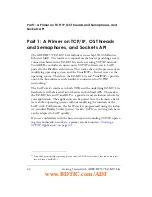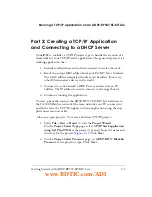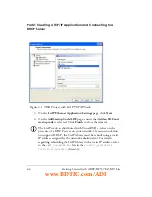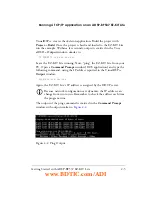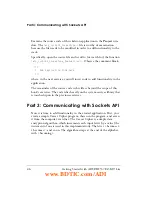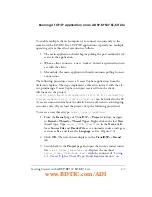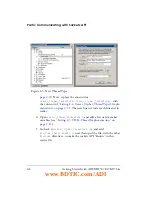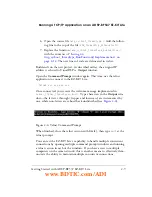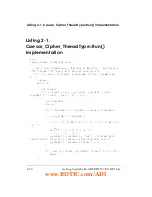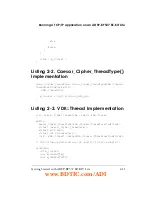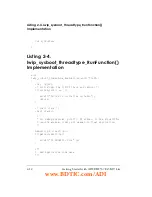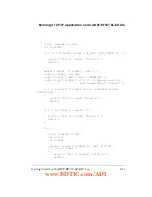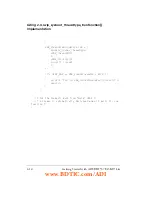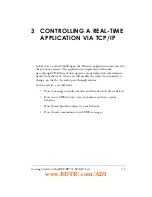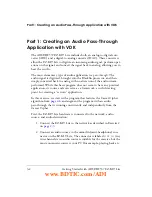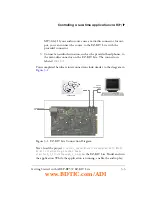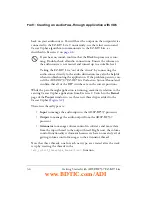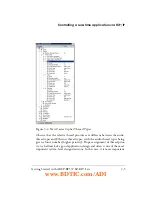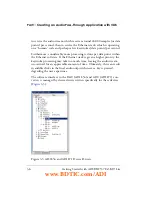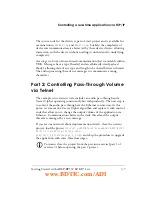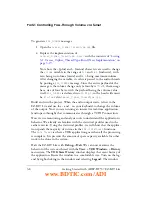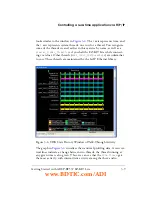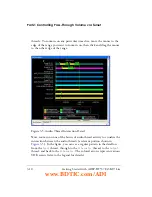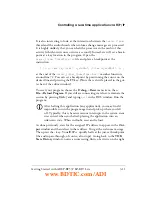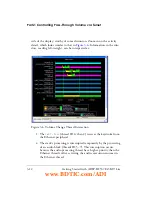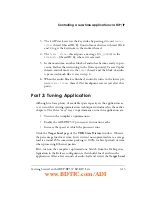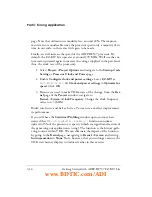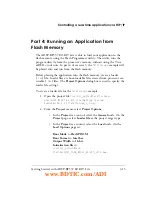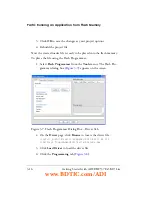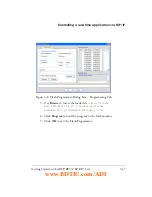
Part 1: Creating an Audio Pass-Through Application with VDK
3-2
Getting Started with ADSP-BF537 EZ-KIT Lite
Part 1: Creating an Audio Pass-Through
Application with VDK
The ADSP-BF537 EZ-KIT Lite includes both an analog-to-digital con-
verter (ADC) and a digital-to-analog converter (DAC). These converters
allow the EZ-KIT Lite to digitize an incoming audio signal, perform oper-
ations on the signal, and convert the signal back to analog, allowing you to
hear the results.
The most elementary type of audio application is a
pass-through
. The
audio signal is digitized, brought into the Blackfin processor, and then
simply converted back to analog with no alteration of the audio stream
performed. While this basic program does not seem to have any practical
application, its source code can serve as a framework, a useful starting
point, for creating a “serious” application.
In this exercise, we start with a program that features the Caesar Cipher
algorithm from
and augment the program with an audio
pass-through that is running concurrently and independently from the
Caesar Cipher.
First, the EZ-KIT Lite hardware is connected to the network, audio
source, and audio destination:
1. Connect the EZ-KIT Lite to the network as described in Exercise 2
on
2. Connect an audio source to the mini-din (mini-headphone) con-
nector on the EZ-KIT Lite. The connector is labeled
LINE IN
. Any
two-channel stereo audio source is suitable for the exercise, but the
most convenient source is your PC (for example, playing back an
www.BDTIC.com/ADI

